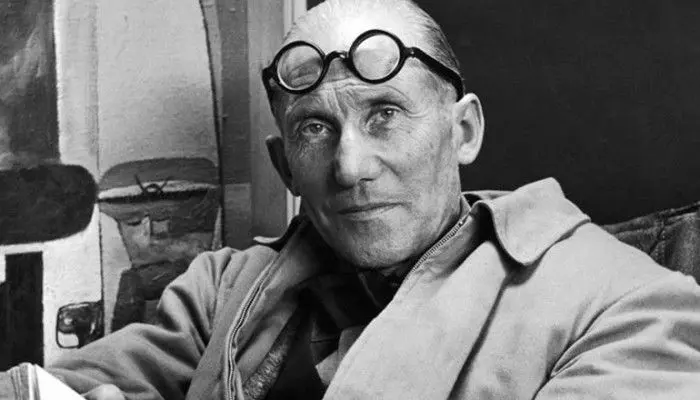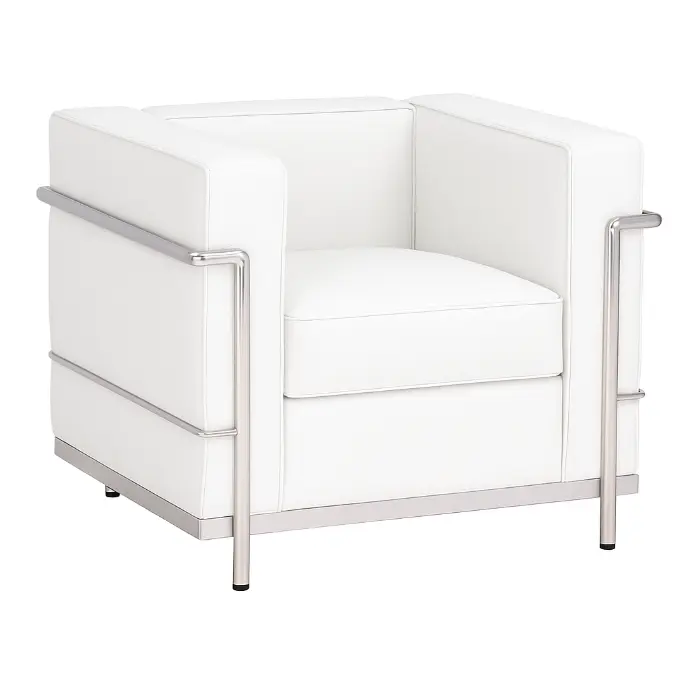
Product Details
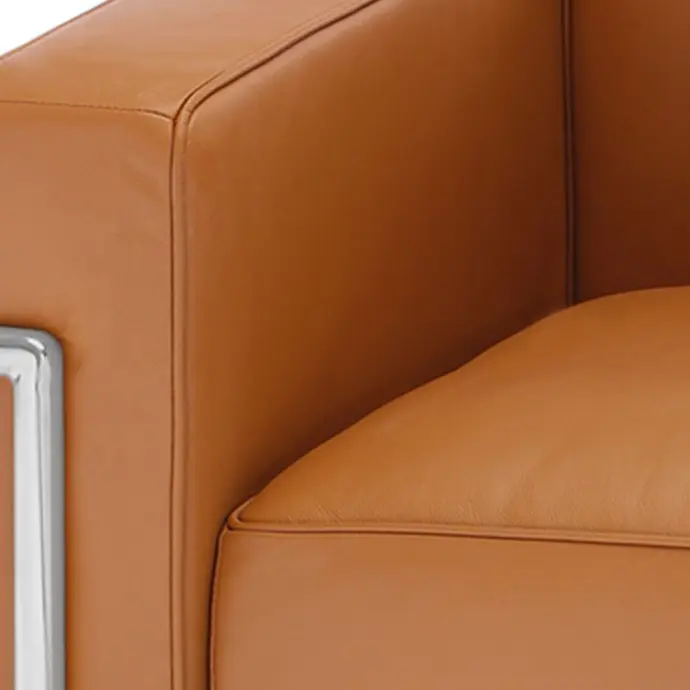
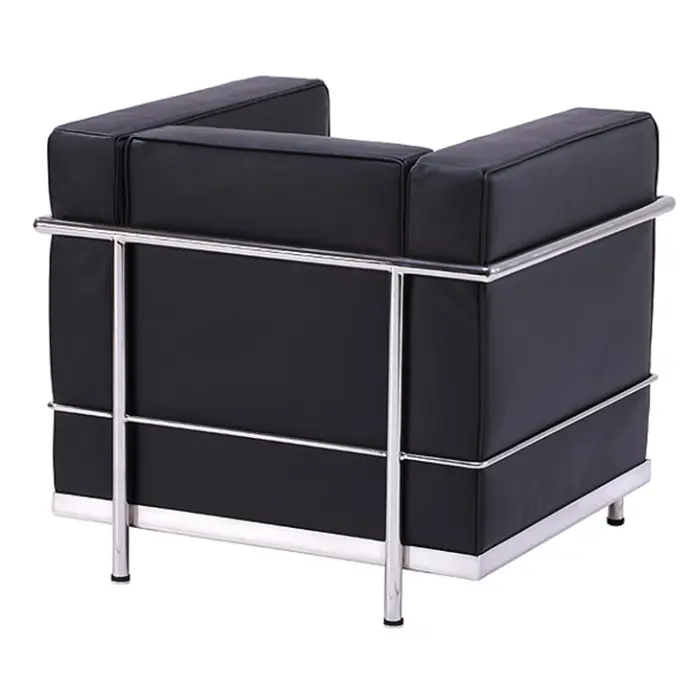
Comfort & Functionality
Generous seat, back, and arm cushions provide firm but supportive comfort, retaining their shape under continuous load. The modular design allows cushions to be removed or replaced with ease, ensuring maintainability. Despite its compact cubic form, the chair offers ergonomic seating posture suitable for living, office, or reception areas. Its minimalist geometry integrates seamlessly into modern interiors while maintaining a distinctive architectural presence.
Materials & Finish
The LC2 Armchair is constructed with a visible tubular steel frame in polished chrome, providing corrosion and scratch resistance. The cushions are upholstered in high-quality aniline leather, with a choice of black or natural tones, and filled with polyurethane foam for resilient comfort. The juxtaposition of leather and steel embodies the Bauhaus ideal of clarity, function, and honesty in materials
Construction
The armchair consists of a cubic frame of precision-bent tubular steel with welded joints, enclosing the cushions rather than supporting them from within. This external structural logic ensures stability while preserving the lightweight, geometric form. The cushions are saddle-stitched and reinforced at seams to withstand long-term use. Rounded steel edges and seamless joints contribute to both durability and visual refinement.
Size and Packaging of the Product
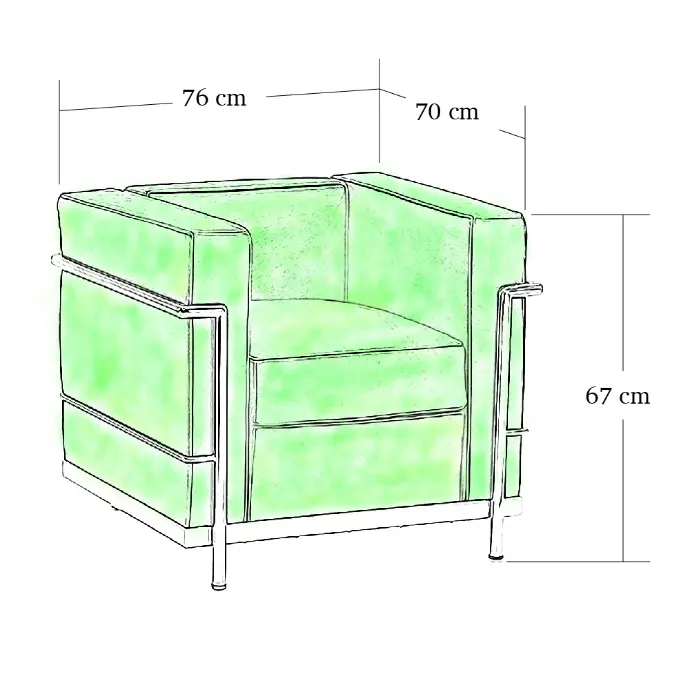
Product Dimensions
Item is fully assembled

Box Dimensions
packed in 1 Box
Le Corbusier
Le Corbusier (1887–1965), born Charles-Édouard Jeanneret-Gris in Switzerland, was a pioneering architect, urban planner, and designer, widely regarded as a master of modernism. He developed radical ideas of functional, rational architecture, emphasizing light, proportion, and open space. His influential works include the Villa Savoye in France, the Unité d’Habitation in Marseille, and the city plan for Chandigarh, India. Le Corbusier also designed iconic furniture pieces, such as the LC2 and LC4, in collaboration with Pierre Jeanneret and Charlotte Perriand. Advocating the “machine for living” philosophy, he reshaped architectural thought and left a lasting global legacy in modern design.
?unique=244a24a)
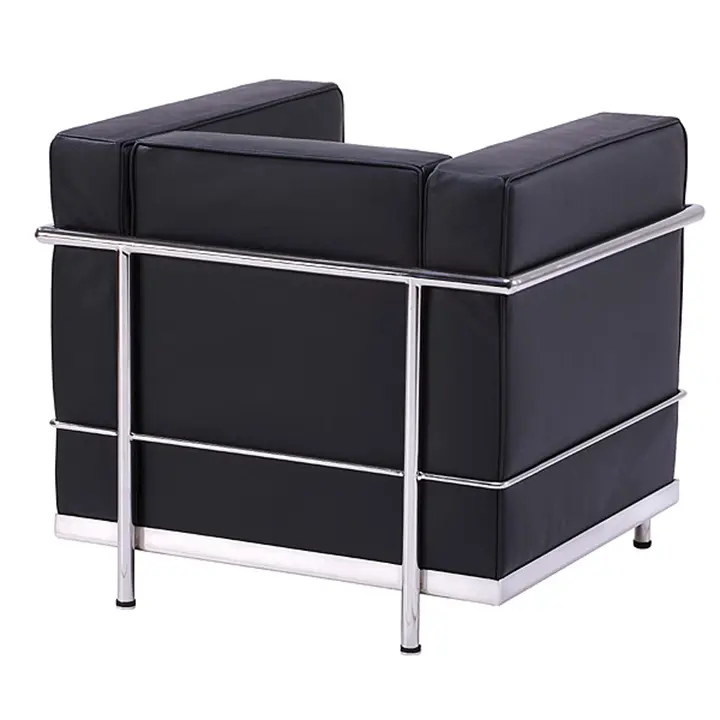
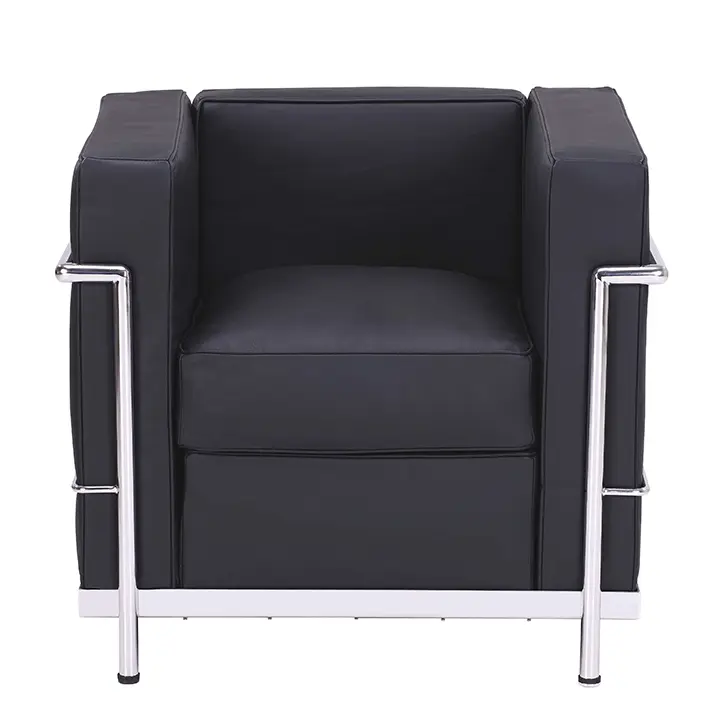
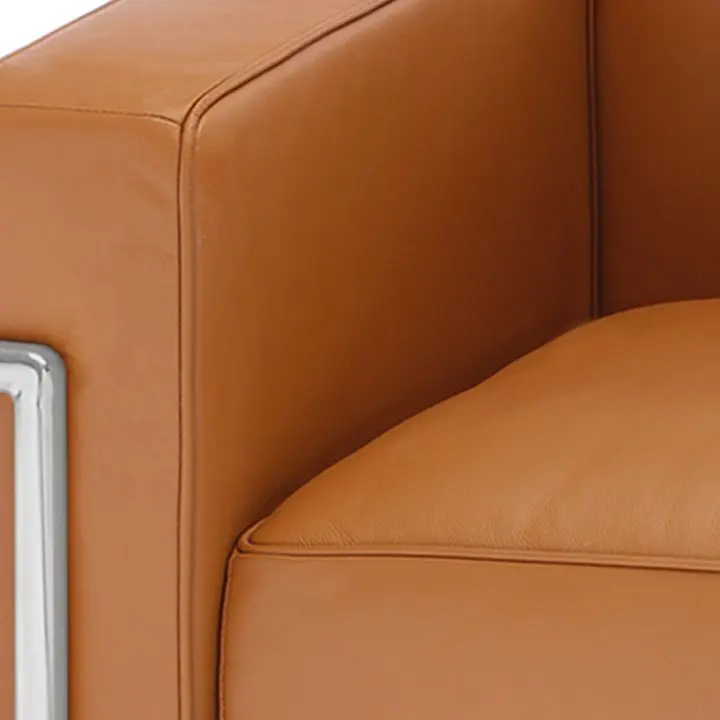
?unique=244a24a)









